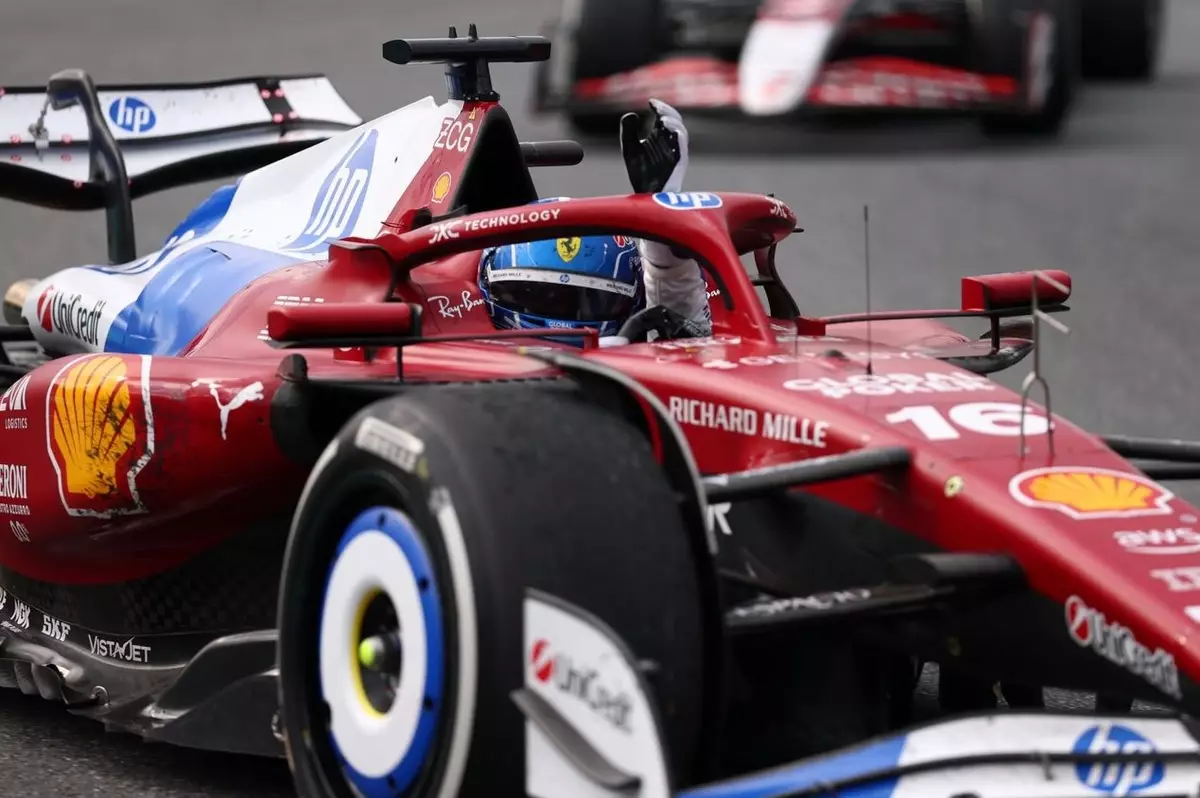In the high-octane world of Formula 1, close relationships between teammates can often be as volatile as the sport itself. The recent drama during the Miami Grand Prix was a direct reflection of this complexity, marked by tense strategy calls that led drivers Charles Leclerc and Lewis Hamilton to swap positions on multiple occasions. While the innate competitiveness of these racers is often the focal point during critical moments like these, Leclerc’s insights post-race provided a refreshing lens through which to view the situation—highlighting not just the challenges of competition but also the potential for unity in the face of adversity.
Leclerc’s assertion that he harbors “no bad feelings” towards Hamilton underscores a maturity often absent in high-pressure sports scenarios. His commentary emphasizes that while competitive spirit fuels their ambition, it shouldn’t overshadow the mutual respect that is essential in a team environment. The Monegasque driver expressed understanding for Hamilton’s frustrations, emphasizing that he, too, would have acted similarly if their roles were reversed.
Communication and Strategy: Areas for Improvement
While team dynamics are critical, Leclerc’s candid acknowledgment of Ferrari’s strategic shortcomings in Miami resonates with many fans and analysts alike. He pointedly noted that improved communication was needed during pivotal race moments, a sentiment that any successful organization would do well to heed. In elite motorsport, the clock ticks rapidly, and decisions must be made almost instantaneously. However, as Leclerc himself indicated, taking that extra moment to confer could mean the difference between victory and regret.
The frustrations that Leclerc voiced during the race, particularly concerning tire management and the impact of dirty air from Hamilton’s car, highlight the intricate balancing act that drivers must perform. It serves as a stark reminder that beyond mere strategy, the physical conditions and environmental factors demand equal attention. While the drivers aspire to gain millisecond advantages, they must also consider how their actions affect tire wear and overall vehicle performance.
Emotional Turmoil Amidst Racing Rivalry
The emotional aspect of racing cannot be understated. Leclerc’s reflections during the Miami Grand Prix posit an interesting dynamic he faced while fighting for position. He expressed frustration at being embroiled in a battle for eighth place, feeling that valuable opportunities were slipping through his fingers. This emotional complexity illustrates the dual pressures facing drivers: to uphold individual competitiveness while remaining cognizant of team objectives.
In a climate where fans often interpret radio messages at face value, Leclerc reminds us that these brief exchanges may not tell the whole story. His admission that relays of frustration convey a skewed picture elucidates how the public tends to misinterpret the reality of such intense racing scenarios. This perspective is not just refreshing, but necessary to foster a more nuanced understanding of on-track relationships.
The Road Ahead: Building a Stronger Ferrari
Looking beyond individual races, Leclerc’s constructive outlook for Ferrari is commendable. He recognizes the potential for improvement, outlining the need for the team to solidify its strategies and operational dynamics consistently. The notion of regrouping and striving for improvement is not just a platitude; it embodies the spirit of resilience that defines elite sporting teams. Leclerc’s candid approach to addressing areas of concern rather than downplaying them is indicative of a committed athlete who genuinely desires growth—not just for himself, but for the entire Ferrari team.
This proactive mindset entails not only addressing communication failures but also critically evaluating how the team can maneuver its resources and talent more efficiently. Leclerc has prime insights into the mechanics of racing, and when paired with the emotional intelligence to navigate teammate relationships, he positions himself—and Ferrari—on a path toward greater achievements.
In the highly competitive realm of Formula 1 racing, it is relationships like that of Leclerc and Hamilton which often exemplify how rivalry can coexist with respect. In a sport where each millisecond counts, understanding interpersonal dynamics can be as pivotal as any technical advantage. The challenge moving forward will be for teams to harness this type of camaraderie while remaining fiercely competitive. Leclerc embodies this balance, making him a uniquely insightful figure in modern motorsport.

